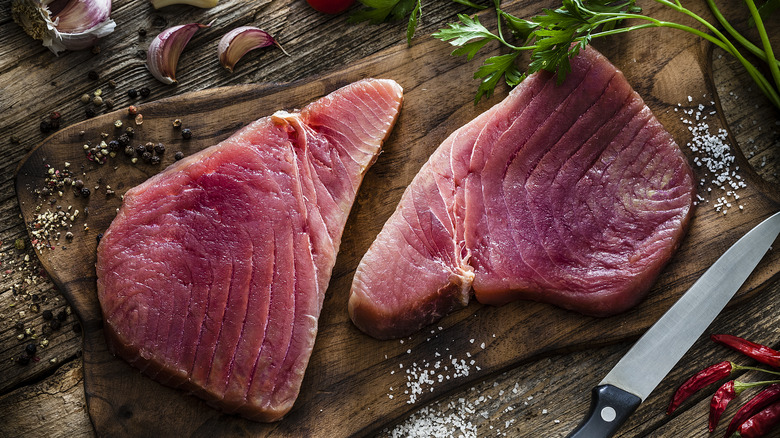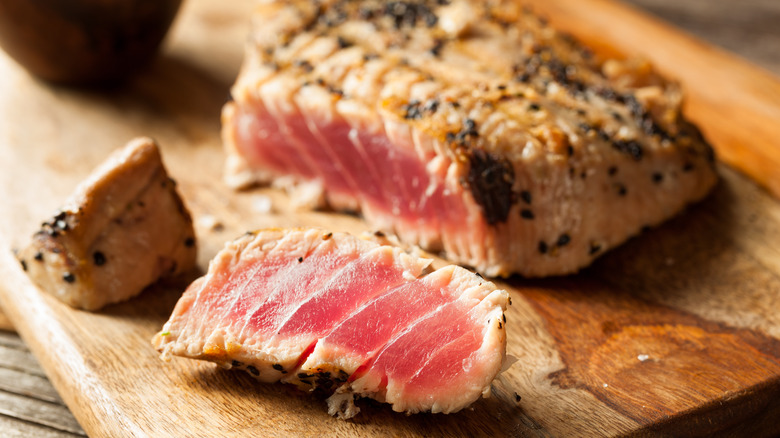Do You Need To Wash Tuna Steaks Before Cooking Them?
You've unwrapped the fresh tuna steaks you purchased at your local market, and depending on which type of tuna you bought, its firm flesh runs the gamut from ruby red to pale pink in color. But before you grill your tuna steaks or sear them, you might have the impulse to rinse them off. For many families, washing meat and poultry is a generational ritual or a religious tradition, as in the preparation of Kosher meats. Washing tuna steaks, or any other fish, meat, or poultry, might seem like the best way to remove potentially harmful bacteria, but it's actually the opposite. In a 2019 report issued by the USDA, researchers concluded that the bacteria washed off any protein can accumulate in high levels in the sink and splash onto kitchen surfaces, increasing the risk of cross-contamination with other foods.
Rather than give your tuna steak a wash, a surefire way to kill bacteria is by cooking fish to the proper internal temperature. Norovirus is responsible for one of the most common foodborne illnesses, and it can survive on your countertop for up to two weeks. However, norovirus can be destroyed when it is heated above 140 degrees Fahrenheit. The FDA thus recommends that finfish, like tuna, should be cooked to the internal temperature of 145 degrees Fahrenheit. For sushi lovers, it may be comforting to know that tuna is often flash-frozen on commercial ships, as well as in some sushi restaurants, and the process kills most parasites that may be infecting the fish.
Water can ruin tuna steak's taste and texture
Tuna steak is known for its beefy meatiness, but its flesh is actually quite delicate. Washing tuna with tap water can affect its color and ruin its texture. The "no-wash" rule is especially important for "the king of sushi," bluefin, one of the most prized fish of the tuna species. Bluefin's unique consistency and luscious taste can be attributed to the way it's caught and carefully processed at sea by commercial fishing ships.
Bluefin is one of the few fish that is warm-blooded, meaning it can regulate its body temperature so it's warmer than the water it's swimming in. Because of the bluefin's high metabolic rate, blood and bacteria course through its body even when caught. The fish needs to be killed and its blood flushed out in a specific manner to avoid tainting its flesh. This process is essential particularly for sushi-grade tuna since if improperly done, its appearance and taste will be affected. Once processed, the bluefin is protected from direct contact with water and is immediately chilled and frozen on the ship.
To maintain your tuna steak's integrity, take a tip from the professionals, and skip the rinse. When you're ready to cook, just pat the steak dry with paper towels. Tuna can easily dry out during cooking, but there are methods you can use to ensure that the pricey hunk of fish you bought lives up to your expectations.

